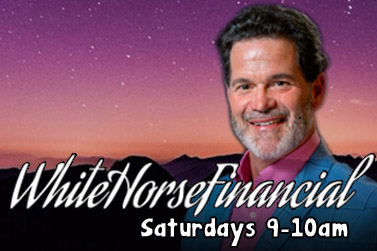
December 4, 2025
|

Listen LIVE Now!
|
TALK 97.3FM - 990AM WEEB
- Mornings with the LeaderMan
- Programming
- Podcasts
- Staff
- Contact Us
- Coverage Map
- Advertisers
- Computer Repair


Tee Time
Back row: Rich Mandell, Bob Adams, Les Fleisher.
Front row: John Doerr, Pat McGowan, Tom Stewart
Front row: John Doerr, Pat McGowan, Tom Stewart
Mondays at 9am
“Tee-Time,” a weekly, local golf-show airs Mondays at 9am, featuring high-profile guests and personalities. Tee-Time airs twice weekly, each Monday & Saturday mornings at 9am.
GOLF WEEK “PARADISE IN THE PINES” By Martin Kaufmann January 10, 2014. Last spring Ben Crenshaw was discussing the renovations to Pinehurst No. 2 with Les Fleisher on Fleisher’s local “Tee Time” radio show on WEEB 990AM in Southern Pines. Also in the studio was John Derr, the nonagenarian Pinehurst resident and sportscaster who covered 62 Masters, starting in 1935. Fleisher refers to Derr as the last living link to golf of the Bobby Jones era. Regulars on the show include Pat McGowen, former PGA professional and Director of Instruction at Pine Needles Golf Resort; Tom Stewart, also a PGA professional and owner of the Olde Sport Gallery in the Village of Pinehurst; and Richard “Pete” Moss, retired professor, author and one of the leading historians of golf in America. Crenshaw was discussing architect Donald Ross 1930s decision to transition from sand greens to grass. At that point, John Derr piped in. Fleisher recalls Derr, now 95, saying, Ben, let me explain exactly how that happened. I was here in 1934 when Mr. Ross returned to Pinehurst and said to Mr. (Leonard) Tufts, I have seen the future of golf in Pinehurst, and it’s not sand greens. We’ve got to convert to grass greens. Derr said he reluctantly agreed to tour Pinehurst No. 2 with Ross, who explained the changes he planned to make. Crenshaw, Fleisher said, sat there wide-eyed at Derr’s recollection. He was amazed at the first-person history, Fleisher said. Golf resorts can build great courses and lovely clubhouses. They can host important tournaments, even major championships. But developing a history and culture of golf comes only with time. The people at Pinehurst like to think of their quaint Sandhills haven as “America’s Home of Golf.” There’s validation for that. Tom Pashley, executive vice president of Pinehurst Resort & Country Club, noted that employee’s business cards include a quote attributed to the St. Andrews Links Trust, keepers of the original Home of Golf. It reads: Of all the golf centers in the world, Pinehurst is the only one that comes close to sharing the ideals and aspirations of St. Andrews.? How did a failed rehab facility for tuberculosis patients become America’s home of golf? James Walker Tufts, a Massachusetts businessman, made his fortune selling soda fountains and was committed to the idea that men of wealth had a responsibility to use their wealth for good purposes, wrote Richard J. Moss in “Eden in the Pines,” a history of Pinehurst. In 1895, Moss reported, Tufts bought 5,980 acres of Sandhills land for $7,400, and alerted Northern physicians that he was building a New England-style village and resort to benefit invalids. Tufts had a personal stake, having long battled various illnesses. But the highly contagious nature of tuberculosis made the venture untenable. In fall 1897, according to Moss, a number of guests began playing golf in the pasture devoted to the dairy herd. So Tufts quickly built a nine-hole course. That was its saving grace. Golf and Pinehurst became intertwined right then and there, said Richard Mandell, a golf architect, Pinehurst resident and author of the just-updated book “The Legendary Evolution of Pinehurst, Home of American Golf.”? By 1899, Ross had arrived from Scotland to head Pinehurst’s golf program and, of course, design its courses. Affluent Northerners soon began a flocking to the Sandhills, often for extended stays as they made their way south for the winter. For much of Pinehurst’s existence, the Village of Pinehurst, adjacent to the resort, was owned by Tufts. For all practical purposes, this was a company town when I was growing up, said Wiley Barrett, a retired school principal who was raised in the village. The Tufts family owned the village and everything in it, including the utilities and even the car dealership. Residents would get one bill at the end of each month invoicing them for everything from gasoline and car repairs to flowers and dry cleaning. Barrett, whose father was Pinehurst’s caddie-master for more than three decades, described it as an idyllic place to grow up. Children from the village were allowed to play at the resort during off-peak hours, and hang around the celebrities who frequented the resort. (I probably got Yogi Berra’s autograph 100 times, Barrett said.) On Halloween, children would pour into the lobby of the Carolina Hotel, where guests gave them money. The Tufts, said Barrett, were very paternalistic. They really looked after everybody. Behind the scenes, however, Pinehurst’s business was collapsing. Pinehurst was dying on the vine, said Bob Burwell, who was raised in Pinehurst and owns Robert’s Golf Shop in nearby Aberdeen. From the late 50s through the early 60s, it was really hurting.? For decades Northerners used to ride the train to Pinehurst for an extended stay, often before continuing on to Florida. Barrett recalls his father driving him to the train station to watch the arriving passengers. Sometimes there were as many as six trains a day. Golf bag after golf bag, they’d load them up and take them over to the hotel, he said. But the rise of air travel made it easier for Northerners to bypass Pinehurst on the way to Florida. The resort was still hosting championships and welcoming celebrities, but Moss research indicated the business took a large financial hit during the Great Depression and never fully recovered. In 1970, the Tufts family sold out to trucking magnate Malcolm McLean, whose Diamondhead Corp. development firm had big plans for Pinehurst. Diamondhead began slicing and dicing the pastoral village into real estate lots and bringing in hundreds of prospective home buyers on weekends, according to Burwell, whose father brokered the sale to McLean. Burwell subsequently worked two years for Diamondhead, in 1973-74. When prospective buyers got cold feet, he had a ready refrain. You don’t have to worry about it, Burwell would say. ?You’re all here for the same reason. The common bond is golf.? Diamondhead renovated the Carolina Hotel and built the original Hall of Fame. But on the whole, many long-timers, including Burwell, have a dim view of that era. They made it a royal train wreck the way they handled it, Burwell said. By the late 1970s, debt-laden Diamondback was desperate for an exit strategy. In 1984 ClubCorp of America purchased Pinehurst, with the intention of returning it to its roots as a resort rather than a real estate company. Through it all, golf has been the abiding attraction for visitors, as well as the swelling ranks of new residents lured to the affordable region. Its appeal runs deep, but it isn’t necessarily universal. The younger generation may be interested in places with a little more flash and sizzle, Fleisher said. ?But that’s not true of the people who typically come to Pinehurst. You know that the vast majority of people who are drawn to Pinehurst are there because they’re in love with the game and they respect the game.? According to the local Convention & Visitors Bureau, 84 percent of visiting golfers have played the game more than 10 years and 91 percent play more than three times per month. There is, however, evidence that the fast-growing region has begun to attract more non-core golfers. That’s certainly true among new residents, but also among leisure travelers. Caleb Miles, president and CEO of the CVB, said core golfers represent about 40 percent of total visitors, down from nearly 70 percent in the 1990s. For locals, those golf visitors are easy to spot ? foursomes having dinner at the Pinecrest Inn in the village or the pubs in Southern Pines. It’s our job as ambassadors of Pinehurst to carry on the conversation (with visiting golfers),? Mandell said. How did you play? Did you enjoy your time? They’re in heaven. It’s a beautiful place to come and play golf. It’s a beautiful place to live.?
Links You Can Use
- All Things Moore County with Bill Sahadi - The Sandhills Premier Show on Moore County Living: Community, Neighborhood Real Estate, Lifestyles.
- Financial Safari - Be prepared, not surprised
- White Horse Financial - What if there was a better way
- General Manager/Program Directors message - Meet Steve Leader Adams and give your feedback.
- Current state of COVID-19 Response by NCDHHS
- WEEB FCC Public File - WEEB FCC Public File
Elections Information
- BallotTrax FAQ - Track your mail-in/absentee ballots
- Moore County Board of Elections - Candidate information, polling stations and times
- NC Board of Elections - Election information for North Carolina
Come see us on Facebook




